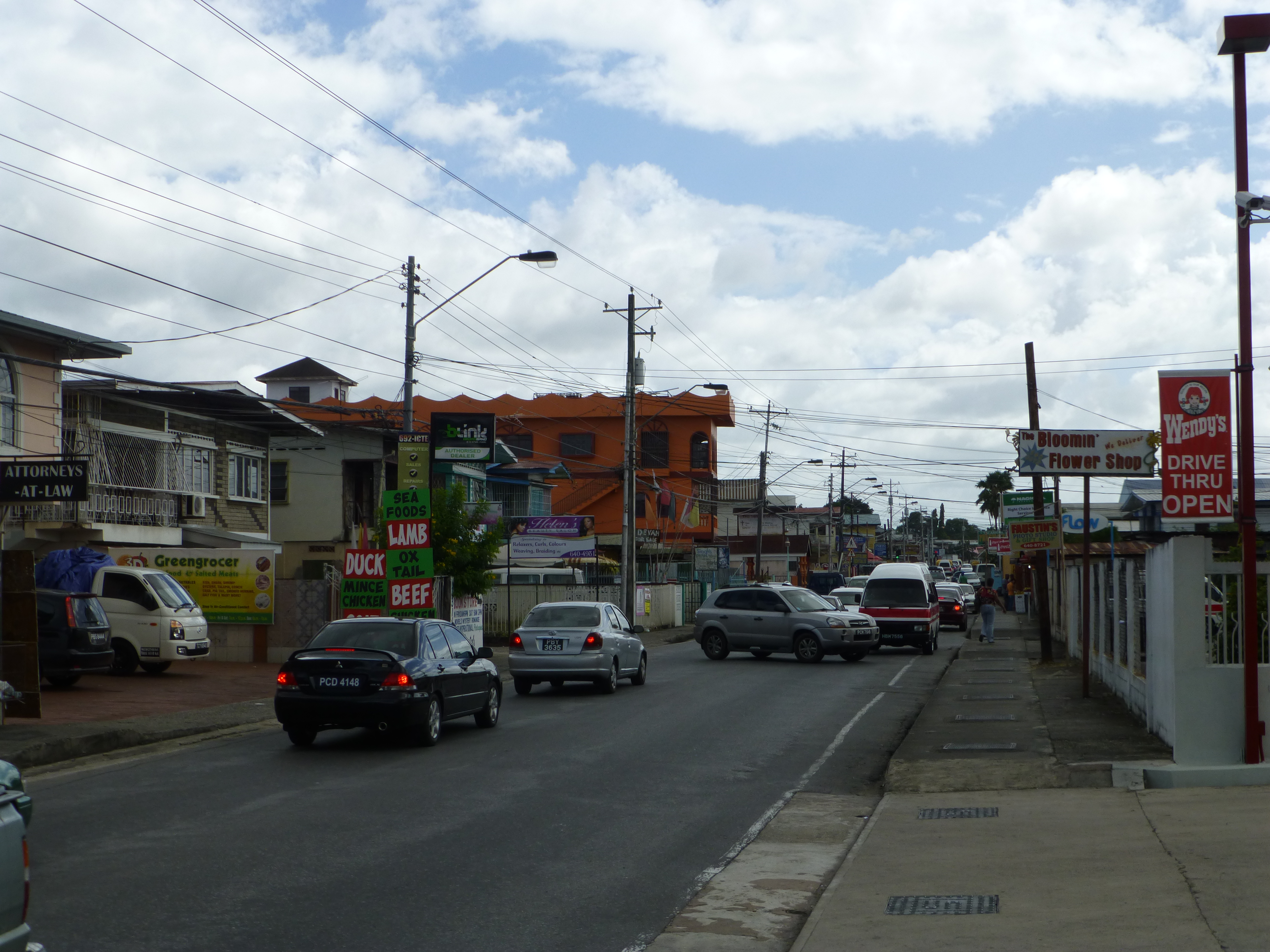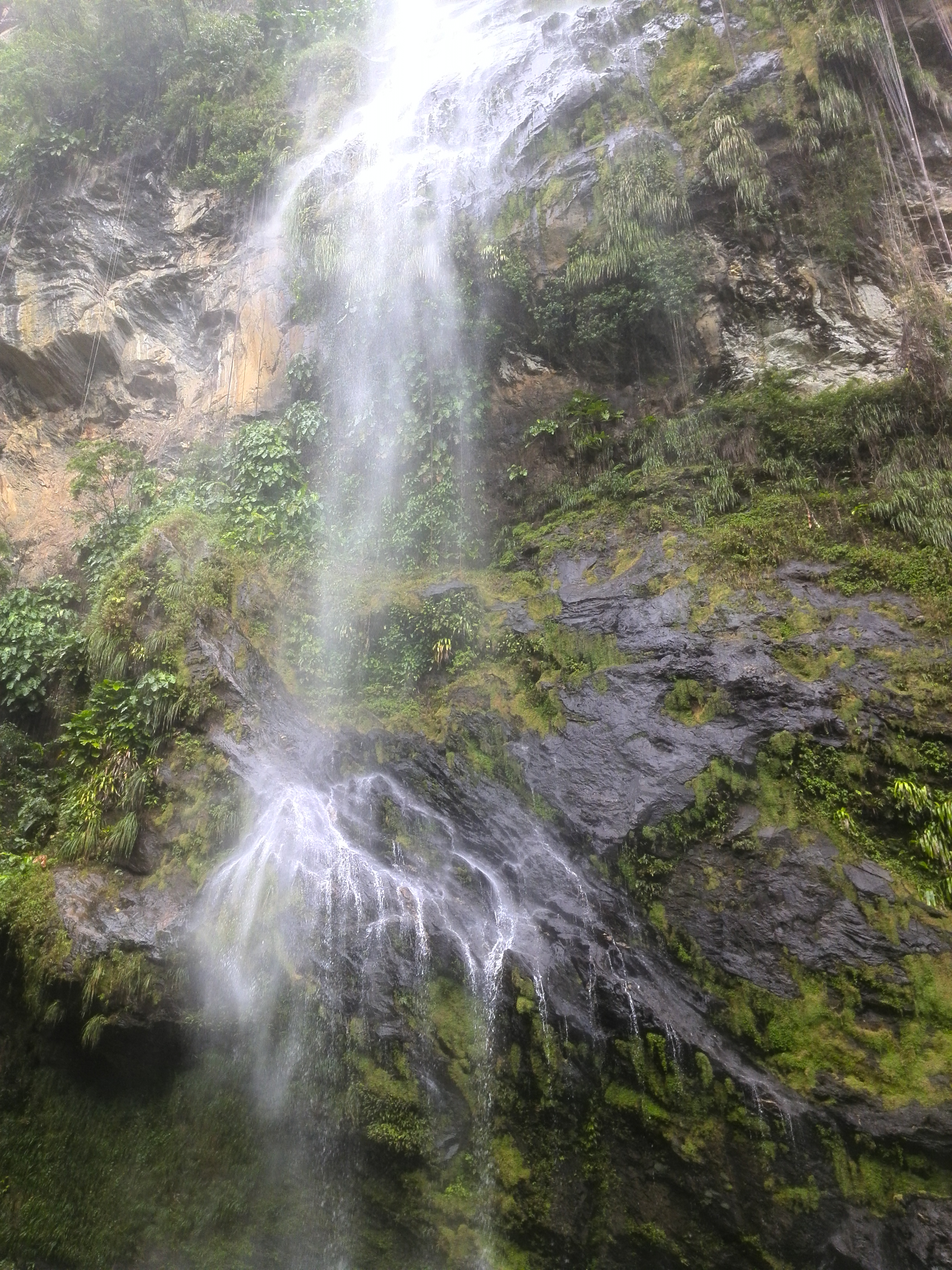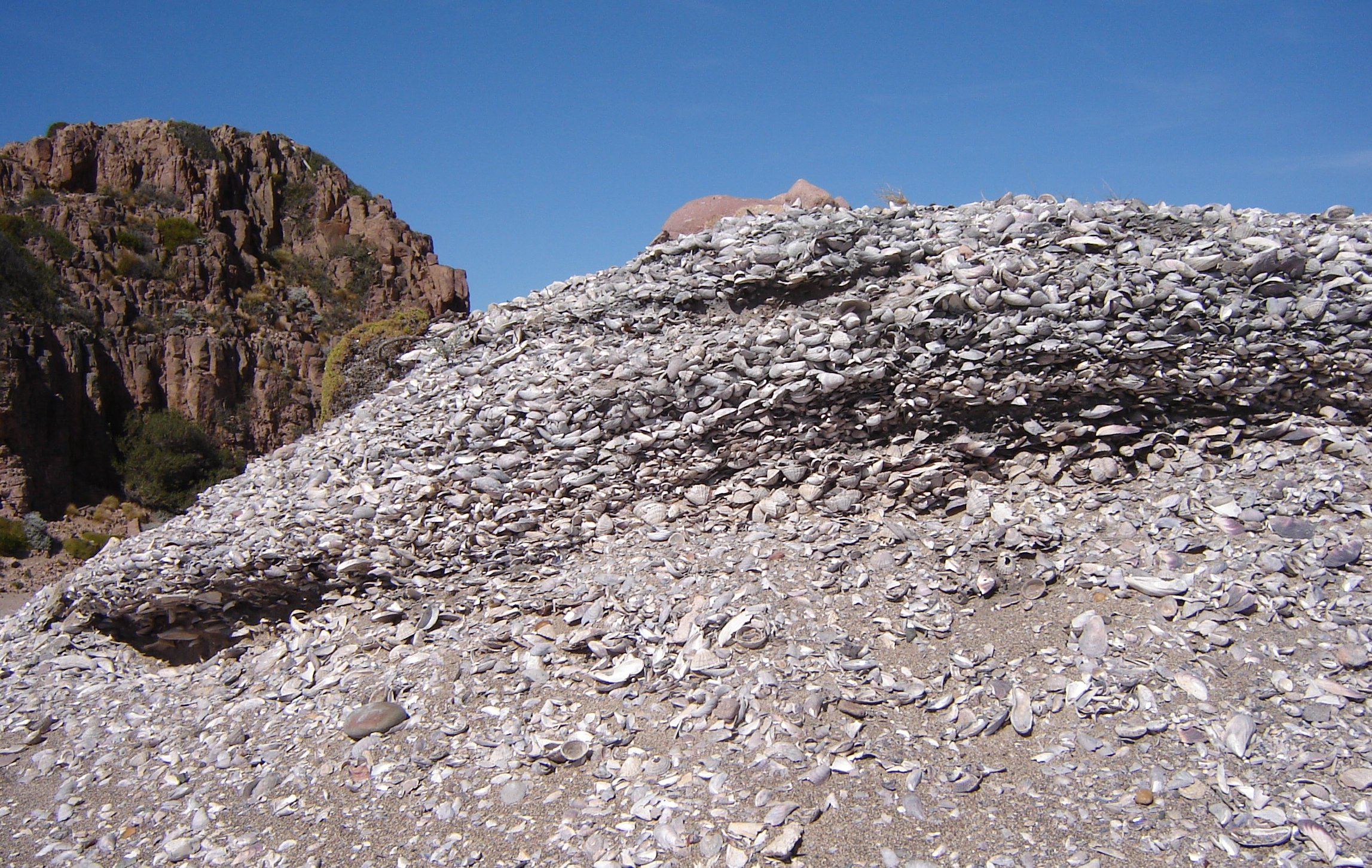|
Caroni River (Trinidad And Tobago)
The Caroni River is the largest river in Trinidad and Tobago, running for from its origins in the Northern Range on the island of Trinidad, through the northern lowlands of the Caroni Plains and enters the Gulf of Paria at the Caroni Swamp. The Caroni and its tributaries drain into one of the most densely populated parts of Trinidad, the East–West Corridor, and also provides most of its drinking water through the Caroni–Arena Dam. Point and non-point pollution is thus a major concern, as is the deforestation of its watershed on the southern slopes of the Northern Range. The banks of the Caroni River are one of the two main sites for Hindu cremations. The River is known to have strong currents and occasionally floods during heavy rainfall, devastating crops, livestock, fields, and farms in the Caroni area. Course The Caroni River originates as the Aripo River in the Northern Range and drains west into the mangrove wetlands of the Caroni Swamp. Major tributaries Twelve ... [...More Info...] [...Related Items...] OR: [Wikipedia] [Google] [Baidu] |
Trinidad And Tobago
Trinidad and Tobago, officially the Republic of Trinidad and Tobago, is the southernmost island country in the Caribbean, comprising the main islands of Trinidad and Tobago, along with several List of islands of Trinidad and Tobago, smaller islets. The capital city is Port of Spain, while its largest and most populous municipality is Chaguanas. Despite its proximity to South America, Trinidad and Tobago is generally considered to be part of the Caribbean. Trinidad and Tobago is located northeast off the coast of Venezuela, south of Grenada, and 288 kilometres (155 nautical miles) southwest of Barbados. Indigenous peoples of the Americas, Indigenous peoples inhabited Trinidad for centuries prior to Spanish Empire, Spanish colonization, following the arrival of Christopher Columbus in 1498. Spanish governor José María Chacón surrendered the island to a British fleet under Sir Ralph Abercromby's command in 1797. Trinidad and Tobago were ceded to Britain in 1802 under t ... [...More Info...] [...Related Items...] OR: [Wikipedia] [Google] [Baidu] |
Catchment Basin
A drainage basin is an area of land in which all flowing surface water converges to a single point, such as a river mouth, or flows into another body of water, such as a lake or ocean. A basin is separated from adjacent basins by a perimeter, the drainage divide, made up of a succession of elevated features, such as ridges and hills. A basin may consist of smaller basins that merge at river confluences, forming a hierarchical pattern. Other terms for a drainage basin are catchment area, catchment basin, drainage area, river basin, water basin, and impluvium. In North America, they are commonly called a watershed, though in other English-speaking places, " watershed" is used only in its original sense, that of the drainage divide line. A drainage basin's boundaries are determined by watershed delineation, a common task in environmental engineering and science. In a closed drainage basin, or endorheic basin, rather than flowing to the ocean, water converges toward the interio ... [...More Info...] [...Related Items...] OR: [Wikipedia] [Google] [Baidu] |
Rivers Of Trinidad And Tobago
This is a list of rivers of Trinidad and Tobago. Trinidad *Caroni River *Lalland River *Oropouche River *Salybia River *Mathura River *Maracas River *Shark River *Caura River *Valencia River *Caparo River *Marchine River *Hondo River *Maraval River *Blue Basin River *Diego Martin River *San Juan River *St. Joseph River *Covigne River Gorge *Marianne River *Shark River *Yarra River *Chaguaramas River *Moruga River *Maturita River *Pilote River *Jack River *Santa Cruz River *Tunapuna River *Macoya/Trantrill River *Tacarigua River (Caura River) *Arouca River *Oropuna River *Mausica River *Arima River *Talparo River *Tumpuna River *Guanapo River *El Mamo River *Aripo River *Cumuto River *Guayamare River *Couva River *Guaracara River *Tarouba River *Cipero River *Guapo River *Cunupia River *Ravine Sable River Tobago * Courland River * Coffee River * Castara River * Bloody Bay River * Cook River (Tobago) * Bacolet River ** Sandy River * Hillsborough West River * Hillsboro ... [...More Info...] [...Related Items...] OR: [Wikipedia] [Google] [Baidu] |
Antonio De Berrio
Antonio de Berrío (1527–1597) was a Spanish soldier, governor and explorer in Colonial America. Biography Antonio de Berrío was born in Segovia. He began his military career at the age of 14 in the service of the king Carlos I. The young nobleman began his military life in Flanders. He entered combat for the first time in the Battle of Marciano that ended with the capture of Siena. Later he was destined to the fight in the African coasts against the Berbers. The next destination was the fight against the Rebellion of the Alpujarras against the rebellious Moriscos. After the conflict in the mountains of Granada, was already appointed as captain of a cavalry company to the surveillance of the coasts of Granada, to finally be appointed governor of the Alpujarras. Already as governor Berrío marries María de Oruña, maternal niece of ''adelantado'' and lawyer Gonzalo Jiménez de Quesada. The latter, who died in 1579, in his will appoints Berrio and his wife as successors ... [...More Info...] [...Related Items...] OR: [Wikipedia] [Google] [Baidu] |
Saint Joseph, Trinidad And Tobago
Saint Joseph was founded in 1592 by Antonio de Berrio and is the oldest town in Trinidad and Tobago. Originally named San José de Oruña, it was the capital of Spanish Trinidad between 1592 and 1783. In 1595, it was attacked and held by Sir Walter Raleigh and was used as a base for his exploration of the Orinoco River in search of the fabled city of El Dorado. Soon after his return the place was burnt and sacked. St. Joseph is not an incorporated municipality. It falls within the boundaries of the Tunapuna–Piarco region. It has several schools, including St. Joseph's Convent, St. Joseph Boys Roman Catholic School, St. Joseph Girls Roman Catholic School, St. Joseph Government School, St. Joseph College, T.M.L Primary School, St Joseph and St. Xavier's Preparatory School. Politics Saint Joseph is part of the St. Joseph parliamentary constituency for elections to the Parliament of Trinidad and Tobago The Parliament of Trinidad and Tobago is the legislative branch of ... [...More Info...] [...Related Items...] OR: [Wikipedia] [Google] [Baidu] |
Tacarigua
Tacarigua (originally San Pablo de Tacarigua) is a town in the East–West Corridor of Trinidad and Tobago. It is located east of Tunapuna, north of Trincity and west of Arouca, Trinidad and Tobago, Arouca. It is on the banks of the Tacarigua River. The city is governed by the Tunapuna–Piarco Regional Corporation. Tacarigua was originally a Spanish ''encomienda'', prior to the relocation of the Amerindians to Arima in 1789. Some of the first mosques in the region were built at Tacarigua in 1850. West Indies cricket team, West Indian cricket player Kieron Pollard was born there in 1987. There is a multisport facility in Tacarigua, the Racquet Sport Centre, which has been host to local and international tournaments in tennis, table tennis and badminton. The 2018 Pan Am Badminton Championships and the 2017 & 2023 Carebaco International, Carebaco Games were held there. The regular Trinidad and Tobago hockey season was restarted in 2025, being held at Tacarigua. References ... [...More Info...] [...Related Items...] OR: [Wikipedia] [Google] [Baidu] |
Maracas Valley
Maracas Valley is a valley in Trinidad that is separated by two mountains between Maracas–Saint Joseph and Maracas Beach. Maracas valley is part of the biodiverse Northern Range mountain range. The region was once inhabited by the Amerindians. There is a rock outcrop that features petroglyphs created by the valley's earliest inhabitants. Historically, the Maracas valley had often attracted many settlers, due to its cool climate and well-watered soil. Cocoa and coffee plantations were established. During the peak of the Great Depression, the valley's agrarian society supported the nation's economy, which was based on agriculture at that time. The valley is home to the nation's tallest waterfall, Maracas Falls, which towers over the valley with a height of 91.5 meters (300 ft) and is the source of the Maracas River, which provides water for the surrounding communities. It is also the location of the main campus for the Seventh Day Adventist University of the Southern Caribbean. ... [...More Info...] [...Related Items...] OR: [Wikipedia] [Google] [Baidu] |
Saladoid
The Saladoid culture is a pre-Columbian Indigenous culture of territory in present-day Venezuela and the Caribbean that flourished from 500 BCE to 545 CE. Concentrated along the lowlands of the Orinoco River, the people migrated by sea to the Lesser Antilles, and then to Puerto Rico. Name This cultural classification comes from adding the suffix "oid" to the sites where these unique pottery styles were first recognised; thus the name Saladoid, from name of the modern settlement of Saladero, is used by archaeologists to identify the peoples of the early ceramic age. Chronology The Saladoid period includes the four following subcultures, defined by ceramic styles. * Hacienda Grande culture (250 BCE–300 CE) * Cuevas culture (400–600 CE) * Prosperity culture (1–300 CE) * Coral Bay-Longford culture (350–550 CE) [...More Info...] [...Related Items...] OR: [Wikipedia] [Google] [Baidu] |
Hunter-gatherer
A hunter-gatherer or forager is a human living in a community, or according to an ancestrally derived Lifestyle, lifestyle, in which most or all food is obtained by foraging, that is, by gathering food from local naturally occurring sources, especially wild edible plants but also insects, Fungus, fungi, Honey hunting, honey, Eggs as food, bird eggs, or anything safe to eat, or by hunting game (pursuing or trapping and killing Wildlife, wild animals, including Fishing, catching fish). This is a common practice among most vertebrates that are omnivores. Hunter-gatherer Society, societies stand in contrast to the more Sedentism, sedentary Agrarian society, agricultural societies, which rely mainly on cultivating crops and raising domesticated animals for food production, although the boundaries between the two ways of living are not completely distinct. Hunting and gathering was humanity's original and most enduring successful Competition (biology), competitive adaptation in the nat ... [...More Info...] [...Related Items...] OR: [Wikipedia] [Google] [Baidu] |
Ortoiroid People
The Ortoiroid people were the second wave of human settlers of the Caribbean who began their migration into the Antilles around 2000 BC. They were preceded by the Casimiroid peoples (~4190-2165 BC). They are believed to have originated in the Orinoco valley in South America, migrating to the Antilles from Trinidad and Tobago to Puerto Rico. The name "Ortoiroid" comes from Ortoire, a shell midden site in southeast Trinidad. They have also been called Banwaroid, after another archaeological site in Trinidad.Saunders 211 Settlement patterns The Ortoiroid are believed to have developed in South America before moving to the West Indies.Rouse 63. The earliest radiocarbon date for the Ortoiroid is 5230 BC from Trinidad. The two earliest Ortoiroid sites in Trinidad are the Banwari Trace and at St. John's Road, South Oropouche, which date back at least to 5500 BC.Saunders 13. At this time, Trinidad might have still been connected to the South American mainland. The majority of archaeo ... [...More Info...] [...Related Items...] OR: [Wikipedia] [Google] [Baidu] |
Midden
A midden is an old dump for domestic waste. It may consist of animal bones, human excrement, botanical material, mollusc shells, potsherds, lithics (especially debitage), and other artifacts and ecofacts associated with past human occupation. These features provide a useful resource for archaeologists who wish to study the diets and habits of past societies. Middens with damp, anaerobic conditions can even preserve organic remains in deposits as the debris of daily life are tossed on the pile. Each individual toss will contribute a different mix of materials depending upon the activity associated with that particular toss. During the course of deposition sedimentary material is deposited as well. Different mechanisms, from wind and water to animal digs, create a matrix which can also be analysed to provide seasonal and climatic information. In some middens individual dumps of material can be discerned and analysed. Shells A shell midden or shell mound is an arc ... [...More Info...] [...Related Items...] OR: [Wikipedia] [Google] [Baidu] |




